Call for Abstract
Scientific Program
2nd International Conference on Energy Materials and Fuel Cell Research, will be organized around the theme “Generation of Energy (R)Evolution for Sustainable Future”
Energy Materials Conference 2018 is comprised of 16 tracks and 104 sessions designed to offer comprehensive sessions that address current issues in Energy Materials Conference 2018.
Submit your abstract to any of the mentioned tracks. All related abstracts are accepted.
Register now for the conference by choosing an appropriate package suitable to you.
In the search for alternative energy sources, we need to make new discoveries in materials science. We need catalysts to convert feedstock’s into fuels, new architectures for better solar cells and materials for advanced energy storage, including lithium batteries. New high-tech materials are key to breakthroughs in biology, the environment, nuclear energy, transportation and national security. Energy Materials is making revolutionary advances in the science of materials discovery and synthesis. Our ultimate goal is to be able to design new materials with useful properties—one atom at a time.

- Track 1-1Advanced Electronic Materials
- Track 1-2Advanced Engineering Materials
- Track 1-3Advanced Functional Materials
- Track 1-4Energy Technology
- Track 1-5Advanced Optical Materials
- Track 1-6Energy Conversion and Storage
Whereas the 19th century was the century of the steam engine and the 20th century was the century of the internal combustion engine, it is likely that the 21st century will be the century of the fuel cell. Full cells are now on the verge of being introduced commercially, revolutionizing the way we presently produce power. Fuel cells can use hydrogen as a fuel, offering the prospect of supplying the world with clean, sustainable electrical power. This Track discusses the history of fuel cells, fuel cells for NASA, alkaline fuel cells for terrestrial applications and PEM fuel cells. Fuel cell applications in transportation, distributed power generation, residential and portable power are discussed. The science of the PEM fuel cell and the direct methanol fuel cell will be discussed.

- Track 2-1Advances in Fuel Cells
- Track 2-2Alkaline Fuel Cells
- Track 2-3Proton Exchange Membrane Fuel Cells
- Track 2-4Fuel Cell Vehicles
- Track 2-5Space Vehicle Power Plants
- Track 2-6Distributed Power Generation
Solid oxide fuel cells (SOFCs) are the most efficient known energy conversion device for producing electricity from a variety of fuels, including renewable biomass, hydrogen, or natural gas, with no pollution-forming emissions. However, their use remains severely limited by high costs, as well as by low durability and reliability. Current projects are aimed at lowering the cost and improving the durability of fuel cells through the use of new materials and processing techniques to produce fuel cells more rapidly using a process that is easily scaleable for mass production. Work is also focused on understanding the electrochemical performance and degradation behaviour of SOFCs, in order to develop strategies to increase their durability.

- Track 3-1Catalysts for Fuel Cells
- Track 3-2Fuel Cell Modelling, Analysis and Simulation
- Track 3-3Polymer Electrolyte Fuel Cell Development
- Track 3-4Solid Oxide Fuel Cell Development
- Track 3-5Fuel Cell Fuels Production and Storage
Hydrogen is the most abundant element in the universe and a promising solution to the world's oil dependence. Hydrogen has many applications in the energy market. First, because of hydrogen's combustive nature, it can be used directly in an internal combustion engine, replacing the need for automotive gasoline. Second, it can be stored in fuel cells to create electricity, providing another power source for a vehicle. They are also used to power and heat buildings. Third, it can replace natural gas in its application to heating and cooling homes. In addition, it could also be used to turn the turbines that bring electricity to homes. With applications in distributed generation and electric vehicles, the hydrogen economy is a revolutionary new field that has the potential to change how we live.

- Track 4-1Hydrogen Energy Production and Storage
- Track 4-2Hydrogen Storage in Single and Multicomponent System
- Track 4-3Hydrogen Storage in Nanoconfined System
- Track 4-4The Future of Hydrogen Economy
- Track 4-5Worldwide Impact of Developing this Technology
- Track 4-6Hydrogen Production and Hydrogen Embrittlement
The comparatively recent shift toward exploitation nano technology with regard to the capture, transfer, and storage of energy has positive economic impacts on society. The management of materials that nano technology offers to scientists and engineers is one amongst the vital aspects of nano technology. Nano technology in energy materials is exhibiting raised potency of lighting and heating, increased electrical storage capability, and a decrease in the quantity of pollution from the utilization of energy. Advantages like these build the investment of capital in R&D of nano technology a prime priority.

- Track 5-1Nanomaterials and their Application
- Track 5-2Nanocharacterization
- Track 5-3Nanomaterials Applied in Solar Cells
- Track 5-4Sustainable Energy Application: Fuel Cells
- Track 5-5Porous Materials to Store Clear Energy Gases
- Track 5-6Carbon Capture and Storage
- Track 5-7Nanosafety: Exposure, Measurement, and Toxicology
We thought long and hard over advances in materials science over the last 50 years. We sought the advice of our editorial advisory panel and asked leaders in the field to add their own contributions. We hope the results are interesting and thought-provoking. In making the final selection, we have tried to focus on the advances that have either changed our lives or are in the process of changing them. Should an advance alter all our daily lives, or does fundamentally changing the research arena count? What about discoveries that can be clearly attributed to a certain date and investigator, or those developments that have come about incrementally through the efforts of many? Where does materials science stop and electronics, physics, or chemistry begin?
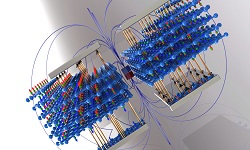
- Track 6-1International Technology Roadmap for Semiconductors (ITRS)
- Track 6-2Scanning Probe Microscopes
- Track 6-3Giant Magneto-resistive Effect
- Track 6-4Semiconductor Lasers and LEDs
- Track 6-5National Nanotechnology Initiative
- Track 6-6Carbon Fiber Reinforced Plastics
- Track 6-7Materials for Li ion Batteries
- Track 6-8Carbon Nanotubes
- Track 6-9Soft Lithography
- Track 6-10Metamaterials
With the advent of more stringent regulations related to emissions, fuel economy, and global warming, as well as energy resource constraints, electric, hybrid, and fuel-cell vehicles have attracted increasing attention from vehicle constructors, governments, and consumers. Research and development efforts have focused on developing advanced powertrains and efficient energy systems. This Track reviews the state of the art for electric, hybrid, and fuel-cell vehicles, with a focus on architectures and modeling for energy management. Although classic modeling approaches have often been used, new systemic approaches that allow better understanding of the interaction between the numerous subsystems have recently been introduced.

- Track 7-1Hybrid Electric Vehicles
- Track 7-2Battery Powered Vehicles
- Track 7-3Mechanical Power Transmission
- Track 7-4Hydrogen Electric Vehicles
- Track 7-5Power System Modeling
- Track 7-6Energy Management & Fuel Economy
This track intents to eventually cover the main aspects of the science of energy materials and devices that are paving the road towards the highly effectual, stable organic and organic-inorganic hybrid solar cells necessary for mass production; Contributions concerning materials synthesis, photophysics, device physics, modeling and any related issues will be discussed. It aims to provide an interdisciplinary global opportunity for researchers, educators, technocrats, students, engineers and industry to present their latest research results, innovations, products and activities.
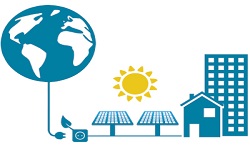
- Track 8-1Hybrid Solar Cells
- Track 8-2Organic-Inorganic Solar Cells
- Track 8-3Photo-electrochemical Solar Energy Conversion
- Track 8-4Solar Thermal Materials
- Track 8-5Photovoltaic
- Track 8-6Advanced Silicon Solar Cells
- Track 8-7New Cell Designs and Concepts
- Track 8-8Alternative Solar Related Technologies
This track aims to provide a platform for knowledge sharing as well as creating favorable atmosphere for collaboration initiations in the field of Green Energy Materials. The broad scope brings together a wide range of research areas including Synthesis, Characterization, Modifications/functionalization and applications of Green Energy materials as well as Materials for energy saving and sustainability.
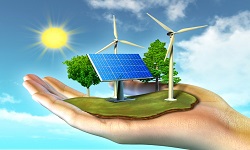
- Track 9-1Nanotechnology for Water, Air and Soil Protection
- Track 9-2Nanomaterial’s and Photocatalytic Nanoparticles for Water and Air Detoxification
- Track 9-3Nanomaterial’s and Nanostructures for Storage, Gas sorption and Sensing
- Track 9-4Materials for Energy Saving and Sustainability
- Track 9-5Applications of Functional Energy Materials
World-renowned researchers are working in overdrive to develop advanced energy storage technologies to aid the growth of the U.S. battery manufacturing industry, transition the U.S. automotive fleet to plug-in hybrid and electric vehicles, and enable greater use of renewable energy. We are building upon our historical leadership in battery research to create a broad platform for demonstrating the development program centered on advanced energy storage materials and systems for both mobile and stationary applications.
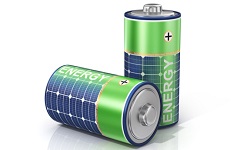
- Track 10-1Battery Technologies
- Track 10-2Thermal Storage Materials
- Track 10-3Phase Change Materials
- Track 10-4Capacitors (Super, Ultra, Pulsed Power)
- Track 10-5Smart grid & Semiconductor Materials
- Track 10-6Rechargeable Technologies
This Track aims to be a unique platform for leading scientists, researchers, scholars and engineers from academia, R&D laboratories and industry around the world to exchange, share and learn the most recent advancement on various aspects related to fabrication, characteristics and application of grapheme and 2D materials.

- Track 11-1Graphene and 2D Materials for Energy Storage and Application
- Track 11-2Application of Graphene Batteries
- Track 11-3Graphene Composites
- Track 11-4Graphene Materials
- Track 11-5Performance of Graphene Based Electrodes
- Track 11-6Application of Graphene Solar Cells and Supercapacitors
- Track 11-7Graphene Lenses and their Applications
The demand for fuel cells is being driven by an increasing awareness and demand for zero emission energy sources. The global fuel cell market is segmented firstly on the basis of its applications such as portable, transportation, and stationary applications. Secondly, it is segmented on the basis of technology such as Polymer/Proton Exchange Membrane (PEM) Fuel Cell, Direct Methanol Fuel Cell, Phosphoric Acid Fuel Cell, Solid Oxide Fuel Cell, and Molten Carbonate Fuel Cell, among others. Lastly, the market is segmented on the basis of geography such as North America, Europe, Asia-Pacific, and Rest of World. Each region has been analyzed with respect to its market trends, growth, and future prospective of the fuel cell market. The data has been analyzed during the period 2012 to 2019. The global fuel cell market size is estimated to reach $5.20 billion, by 2019. The unit shipments of fuel cells are expected to increase from 62,197 units in 2013, to 214,369 by 2019.

- Track 12-1Fuel Cell Commercialization
- Track 12-2Fuel Cell - Electrolysis
- Track 12-3Biofuels
- Track 12-4Hybrid Automobiles
Functional bio nano materials like carbon nanotubes (CNTs), graphene, fullerenes, soft, polymeric nanoparticles, metal organic nano materials, self-assembled and supramolecular nanostructures, and their derivatives have distinctive physico-chemical properties like catalytic, dielectric, optical and mechanical. Applications are sensors, drug delivery, proteomics and biomolecular electronics. Especially, their biological applications have furthered elementary understanding of bio molecular systems like vesicles, viruses and cells, stimulated design of nano materials with biological functions. The last ones are ordinarily referred to as bioinspired nanomaterials or biomimetic.

- Track 13-1Biomaterials Surfaces
- Track 13-2Bioengineering
- Track 13-3Bio-inorganic Nanomaterials
- Track 13-4Biomimetic Materials
- Track 13-5Surface Coating and Modification
- Track 13-6Nanoscale Surface Modification
Materials are characterized into mechanical, thermal, electrical, optical and magnetic properties. Materials that exhibit special and unique optical and magnetic effects are utilized in various industries and in fundamental and pure research. The near future holds breakthrough dimensions in optics and photonics fields. Take the example of semiconductors recently; The applications of semiconductors in energy saving systems embrace superior sensible grid, electrical power transmission, transformers, power storage devices, fault current limiters, etc.. Replacing vehicle chassis with lighter weight materials by increasing strength to weight ratio is being researched.

- Track 14-1Imaging, Microscopy and Adaptive Optics
- Track 14-2Photonics
- Track 14-3Optical Nanomaterials for Photonics/Biophotonics
- Track 14-4Engineering Applications of Spectroscopy
- Track 14-5Lasers in Medical and Biology
- Track 14-6Advances in Dielectric Materials and Electronic Devices
- Track 14-7Laser Beam Delivery and Diagnostics
- Track 14-8Advanced Spintronics Materials
Using appropriate electronics, piezo electrical effect is used for making a self-sustaining energy supply system. This is of explicit interest whenever power supply via cable isn't feasible and therefore the use of batteries associated maintenance expenditure don't seem to be desired. The application of piezoelectricity harvesting is anticipated to extend considerably in oil and gas production because it may be a cost-efficient variant to wired infrastructure. Asia Pacific and North American countries are expected to indicate higher growth in the thermo electricity energy harvesting market over the forecast period.
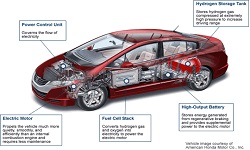
- Track 15-1Bio-based Energy Harvesting
- Track 15-2Piezoelectric Materials
- Track 15-3Thermoelectric Materials
- Track 15-4Pyroelectric Materials
- Track 15-5Micro Wind Turbine
- Track 15-6Emerging Energy Harvesting Technologies
Nanotechnology is the collaboration of the physics, chemistry, biology, computer and material sciences integrated with engineering entering the nanoscale which range between 1-150nm. This means science and engineering focused on making the particles, things and devices at the atomic and molecular scale. The properties of nanomaterials differ from those of bulk materials having unique optical, electronic and mechanical properties. Engineered nanomaterials (ENMs) are designed and produced with novel physicochemical properties for a specific application from minerals and other chemical substance. Nanomaterial research is a material science based approach to nanotechnology which has its application in healthcare, electronics, cosmetics, optics, catalysis, pharmaceutics, energy conservation and other fields. The latest field of research on nanotechnology include Nano-optics and nanophotonic, Nanotoxicology and Nano safety, Graphene lenses and their applications, 5Nanobubbles technology, Recent technologies in medical imaging, Ultralight materials, etc,. Another important aspect of nanomaterials is Carbon Nano materials, which are an enabler for technology with seemingly endless potential applications: detecting cancer before it spreads, self-repairing buildings and bridges, filtering water, and powering mobile devices from body heat or movement. Carbon nanotubes are incredibly small and incredibly strong, 100 times stronger than steel at one-sixth of the density and 10,000 times smaller than one human hair. Graphene is a carbon membrane that, at just one atom thick, is stronger than steel and can tolerate of wide temperature and pH ranges.
The global nanotechnology-based medical devices market is expected to grow at a significant CAGR of around 11-12% during the forecast period (2014–2019). This report studies the global nanoparticle analysis market over the forecast period of 2015 to 2020. The market is expected to reach USD 91.1 Million by 2020, at CAGR of 5.4% from 2015 to 2020.

- Track 16-1Carbon Nanostructures
- Track 16-2Nanomaterials & Nanocomposites
- Track 16-3Nanotubes
- Track 16-4Nano Medicines
- Track 16-5Nano-Sensors
- Track 16-6Nano-optics and Nanophotonic
- Track 16-7Nanotoxicology and Nano Safety
- Track 16-8Nanobubbles Technology
